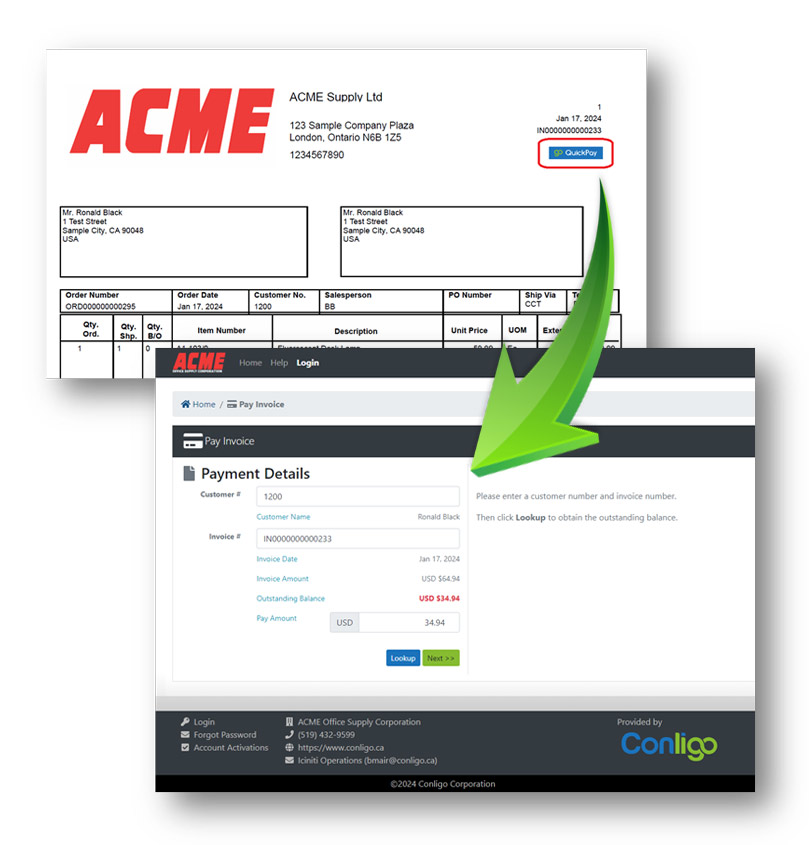You do a great job for your customers and deserve to be paid for your services in a timely manner. But how often does it really work that way?
Many companies spend months trying to chase down payment for a job well done. This effort can cost you a lot of money and even more headaches.
To address this, you can study up on the techniques for improving collections. But you can also automate your A/R in Sage 300 for maximum efficiency. There are many benefits to doing this, but the biggest are streamlining your A/R and accelerating cashflow.
Enter OneView
It was with this goal in mind that we created OneView, the best-in-class solution to automate A/R in Sage 300.
How does OneView do this? It’s simple.
1) It loads a list of your customers from Sage and invites them to set up an account on your OneView portal
2) It pulls from Sage to show customers their outstanding balance, open and paid invoices, orders, credit notes, and other info.
3) When connected to Conligo Pay, it allows them to pay their outstanding invoices online.
4) It generates automated emails to remind them of unpaid invoices or outstanding balances.
Sound good?
Let your customers shop for more!
We should also add that the portal allows customers to access inventory info from Sage and easily reorder items or add new ones. They can also enable an auto-reorder function for frequently ordered products.
In short, OneView does 95% of the job of a full B2B webstore at a fraction of the cost and with much greater simplicity. That means greater reliability, speed, and convenience for you and your customers.
We’re talking about a fully ERP-integrated solution that is:
- Out-of-the-box
- Highly configurable
- Streamlined
- Simple
- Clear
- User-friendly
For a list of this product’s incredible features, click here to learn more. If you’d like to learn more about how you can automate your company’ A/R process in Sage, book a demo today by reaching out to sales@conligo.ca.





